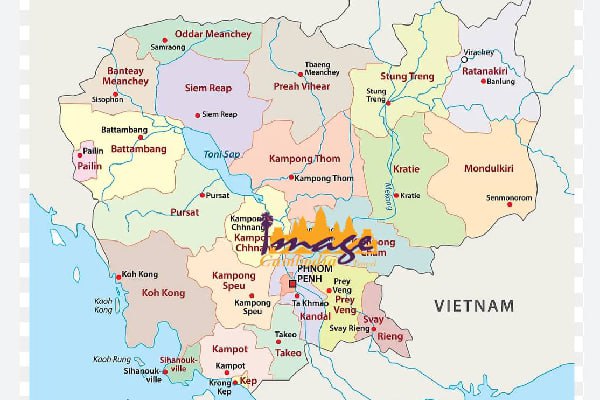
Phnom Penh is the capital and largest city of Cambodia, situated in the southern part of the country along the banks of the Tonlé Sap, Mekong, and Bassac rivers.

Phnom Penh, holds significant cultural, historical, and political importance. It is famous for landmarks like the Royal Palace, Silver Pagoda, and the National Museum, which showcase the country's rich heritage. Additionally, Phnom Penh played a crucial role in Cambodia's history, particularly during the Khmer Rouge era, with sites like the Killing Fields and Tuol Sleng Genocide Museum serving as poignant reminders. The city is also known for its vibrant markets, lively street scenes, and the convergence of traditional and modern aspects of Cambodian life.
1. Royal Palace:
The Royal Palace in Phnom Penh, Cambodia, is a stunning complex that serves as the official residence of the King of Cambodia. Tourists are drawn to its exquisite Khmer architecture, beautiful gardens, and the Silver Pagoda, which houses a remarkable emerald Buddha statue and a floor paved with silver tiles. The palace offers a glimpse into Cambodia's rich history and cultural heritage, making it a captivating destination for visitors.
** Please beaware before visiting the Royal Palace** :
“Wear conservative and modest clothing that covers your shoulders and knees. This applies to both men and women. Avoid wearing sleeveless tops, shorts, or skirts that are above the knee. Long pants or a long skirt and a shirt with sleeves are suitable choices. Remove your shoes before entering the main buildings and temples within the Royal Palace complex. Wearing easily removable shoes is practical. Remove hats and sunglasses when entering the throne hall or other sacred areas”.
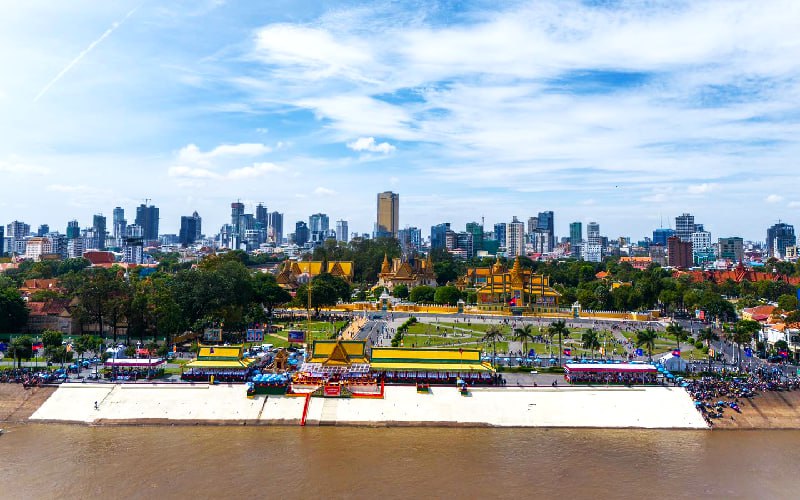

2. Silver Pagoda (Wat Preah Keo Morokat):
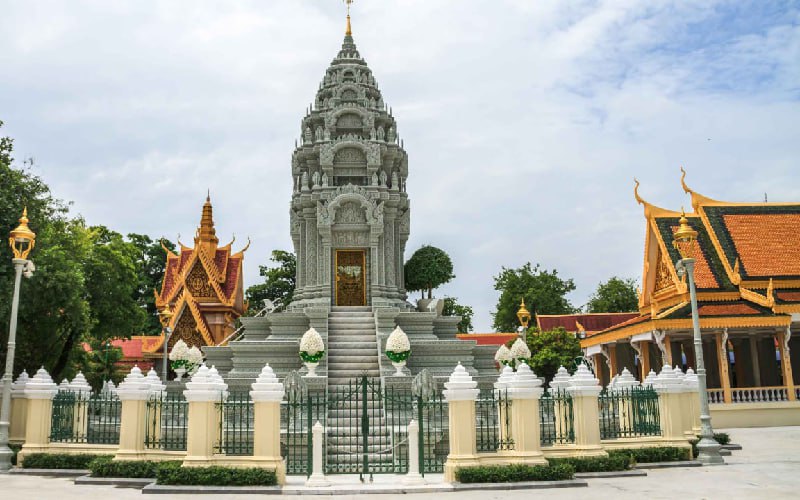
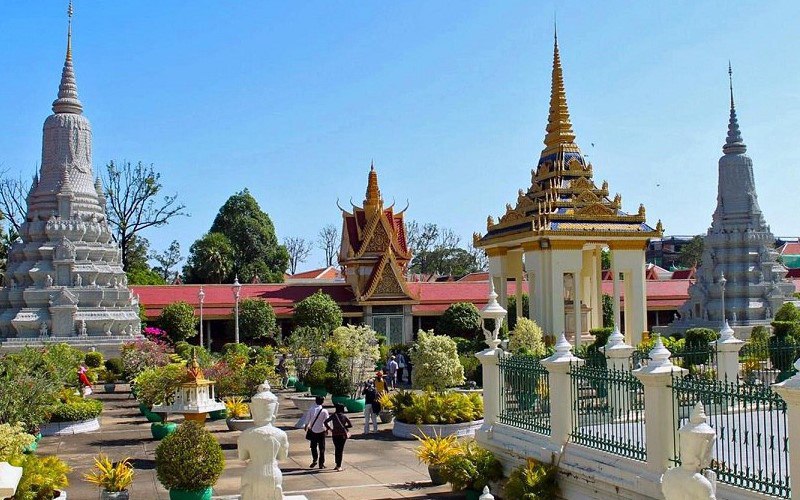
The Silver Pagoda, located within the Royal Palace complex, is renowned for its opulence and cultural significance. Also known as Wat Preah Keo Morokat, the pagoda's floor is adorned with over 5,000 silver tiles, giving it its name. Inside, you'll find a dazzling array of precious artifacts, including a life-sized gold Buddha encrusted with diamonds. The Silver Pagoda serves as a testament to Cambodia's artistic and religious heritage, making it a compelling attraction for tourists seeking a glimpse into the country's rich history and spiritual traditions.
3. National Museum of Cambodia:
The National Museum of Cambodia in Phnom Penh is the country's largest archaeological and cultural history museum. It houses a vast collection of Khmer art and artifacts, spanning from prehistoric times to the post-Angkor period. Visitors can explore sculptures, ceramics, ethnographic displays, and more.
Notable highlights include the statue of King Jayavarman VII and the legendary Leper King from Angkor, as well as a comprehensive collection of Khmer ceramics. The museum's architecture itself is also noteworthy, featuring traditional Khmer design.
For tourists interested in Cambodia's rich cultural heritage and the evolution of Khmer art over the centuries, the National Museum is a fascinating and educational destination.

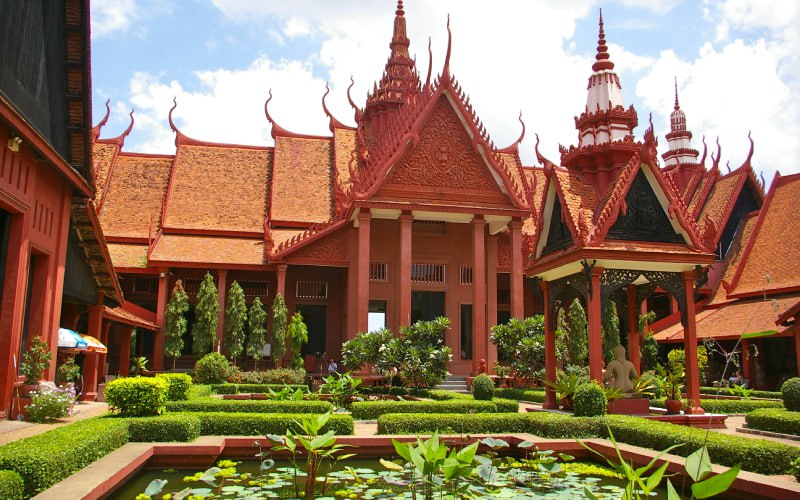
4. Wat Phnom:
Wat Phnom is a historic Buddhist temple located in the capital city of Phnom Penh, Cambodia. It stands on a hill (Phnom in Khmer) that is about 27 meters high, providing a scenic view of the city. The temple complex is a popular destination for both locals and tourists.
Wat Phnom is known for its cultural and religious significance, as well as its architectural charm. The site features a central stupa, statues, and various shrines. Visitors can climb the staircase to reach the top and enjoy panoramic views of the surroundings

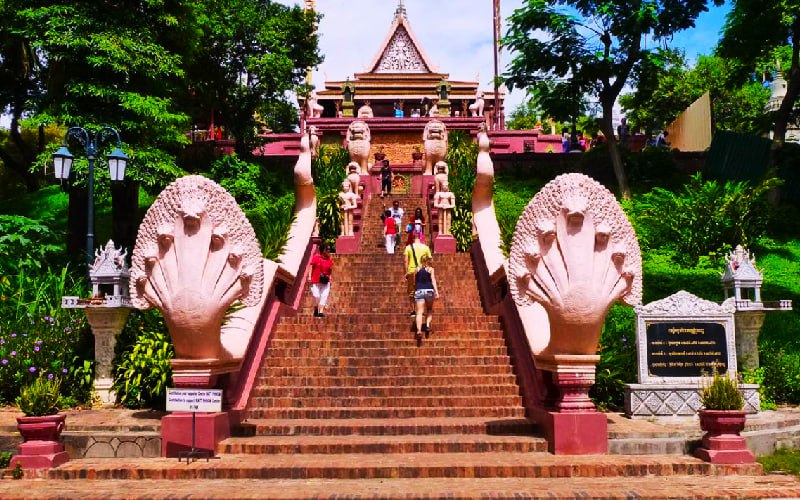
For those interested in exploring Cambodian religious and cultural heritage, Wat Phnom offers a serene and contemplative atmosphere. It's often considered an interesting and peaceful place to visit in Phnom Penh.
5. Central Market (Phsar Thmei):
The Central Market, also known as Phsar Thmey, is a bustling market in the heart of Phnom Penh.
Renowned for its distinctive yellow art deco building, it offers a vibrant shopping experience. Visitors can explore a variety of stalls selling jewelry, clothing, electronics, souvenirs, and local crafts.
The market's unique architectural style and the lively atmosphere make it an interesting place to visit. It's not only a shopping destination but also a cultural experience, allowing tourists to immerse themselves in the local scene and discover Cambodian products. Whether you're looking for traditional Khmer goods or simply want to soak in the market ambiance, Central Market is worth a visit in Phnom Penh.
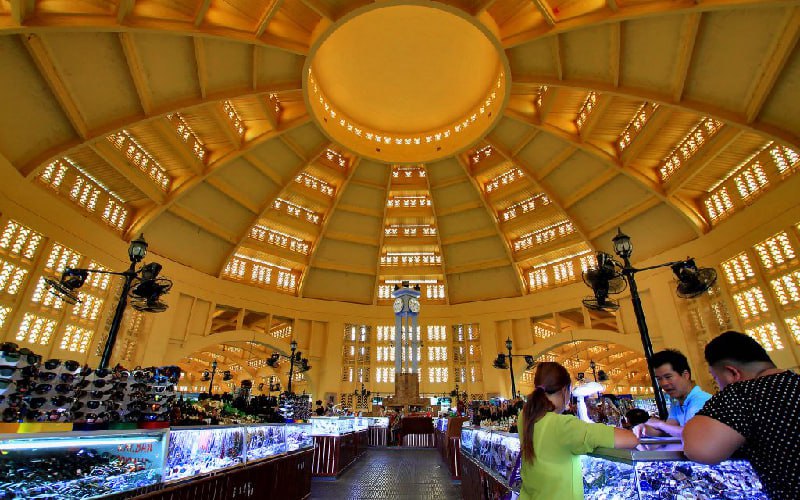
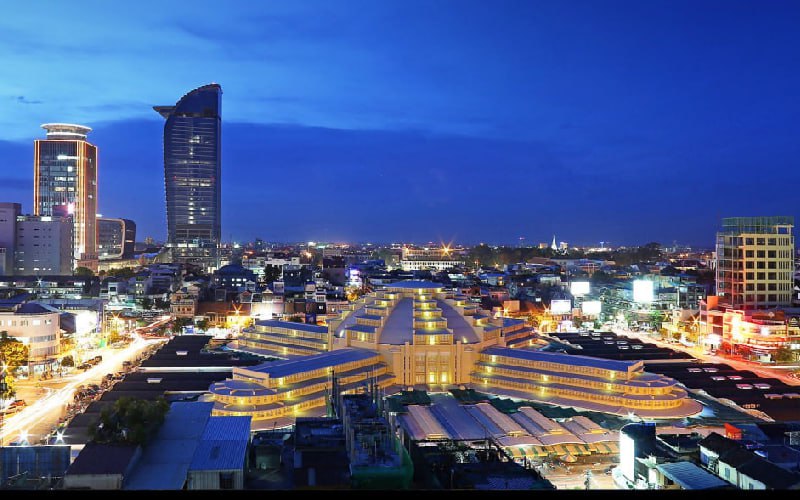
6. Independence Monument:
The Independence Monument in Cambodia is a prominent structure located in the capital city, Phnom Penh. It was built in 1958 to commemorate Cambodia's independence from French colonial rule in 1953. The monument's design incorporates traditional Khmer architectural elements, and it stands as a symbol of the country's sovereignty.
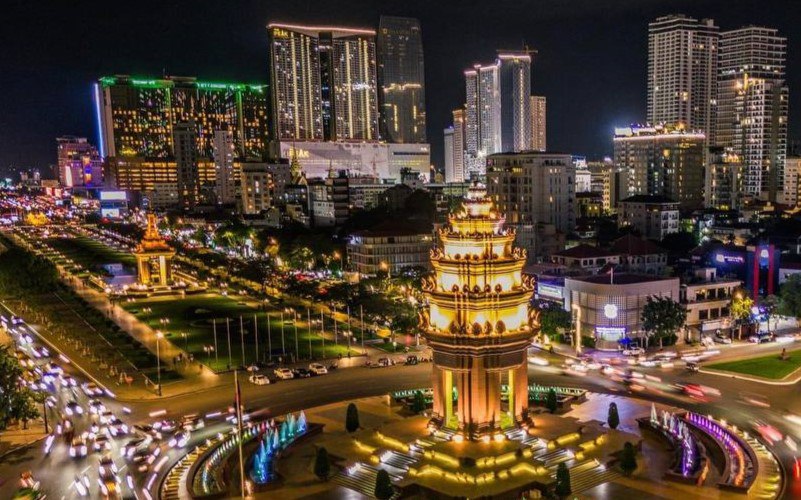
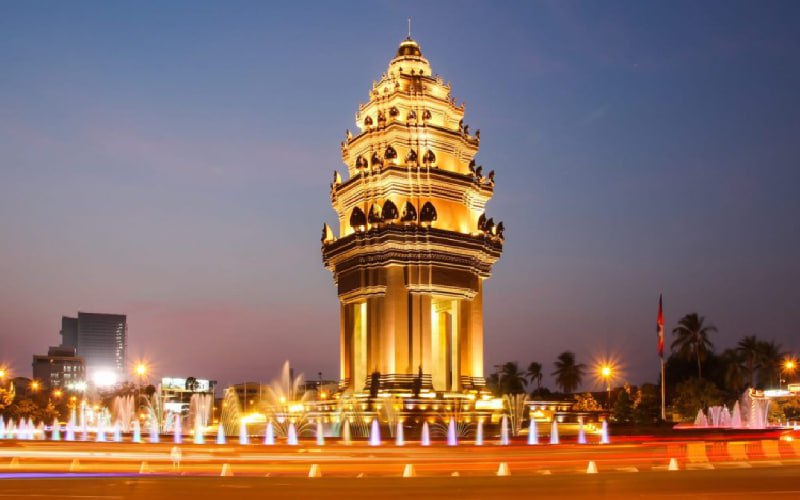
7. Riverfront (Sisowath Quay): Enjoy a leisurely stroll along the scenic riverfront, lined with cafes, restaurants, and shops
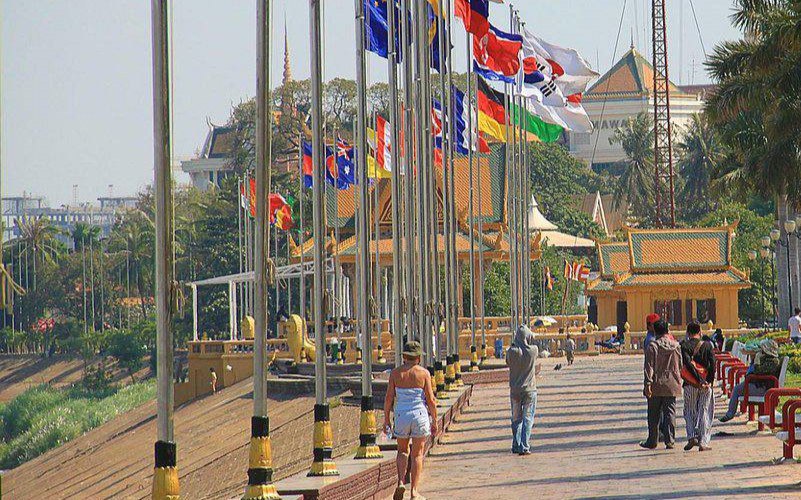
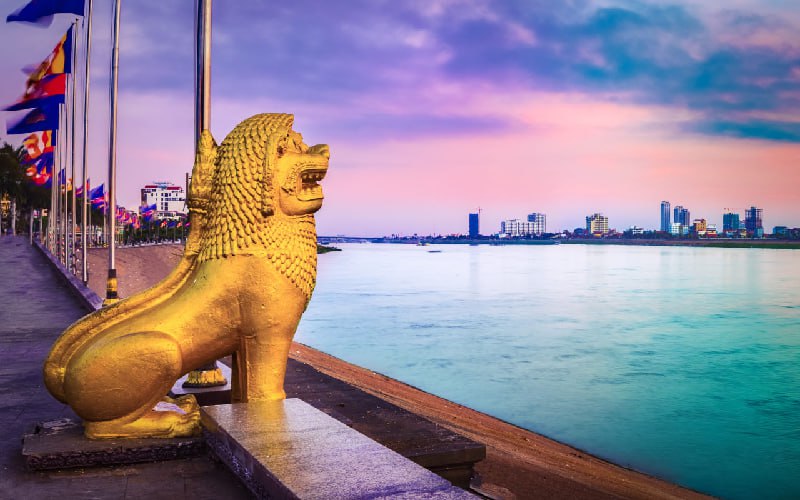
8. Russian Market (Phsar Toul Tom Poung): Explore this market known for its diverse range of goods, including textiles, souvenirs, and local handicrafts.
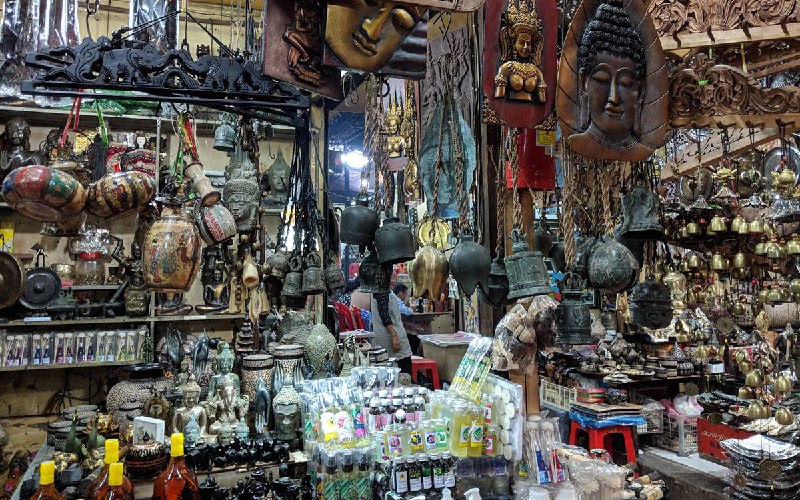
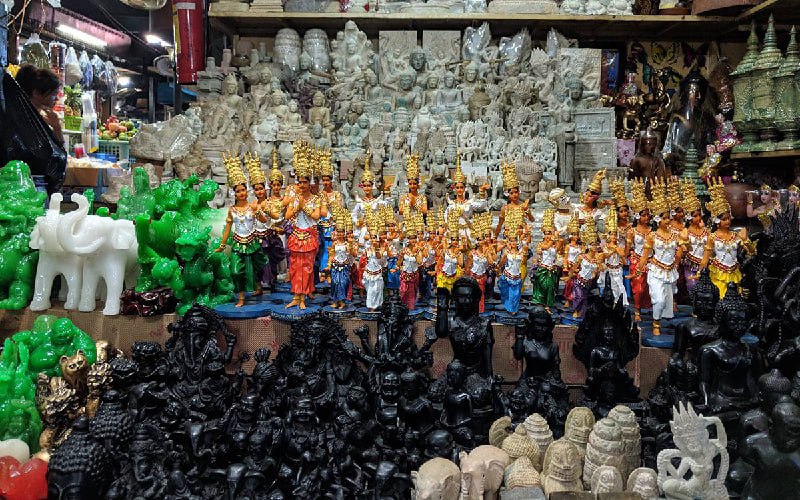
9. Tuol Sleng (S-21):
Tuol Sleng, also known as the Tuol Sleng Genocide Museum, is a former high school turned into a prison and interrogation center during the Khmer Rouge regime (1975-1979) in Cambodia. The site is a haunting reminder of the atrocities committed during that period. Visitors to Tuol Sleng can explore the prison's somber history, view the preserved prison cells, and see exhibitions that document the suffering endured by prisoners.
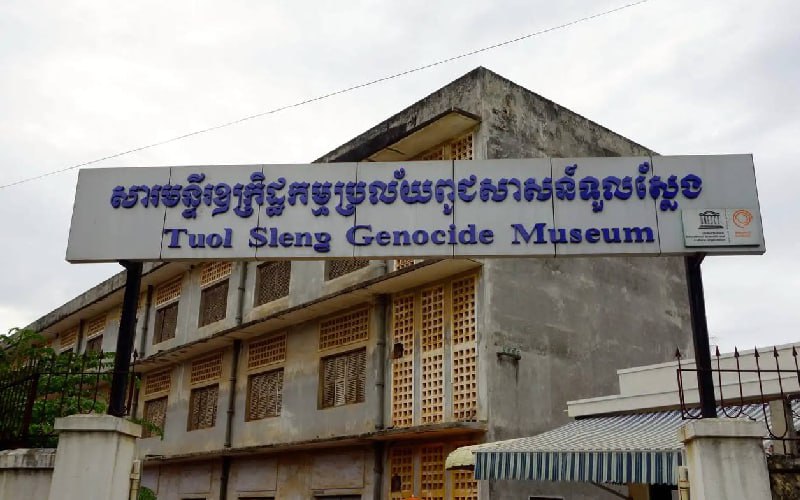
While the experience is emotionally challenging, many visitors find it important to witness this dark chapter of Cambodia's history as a way to pay respects to the victims and gain a deeper understanding of the country's resilience and recovery. It serves as a memorial and educational site, contributing to awareness and reflection on the impact of genocide.
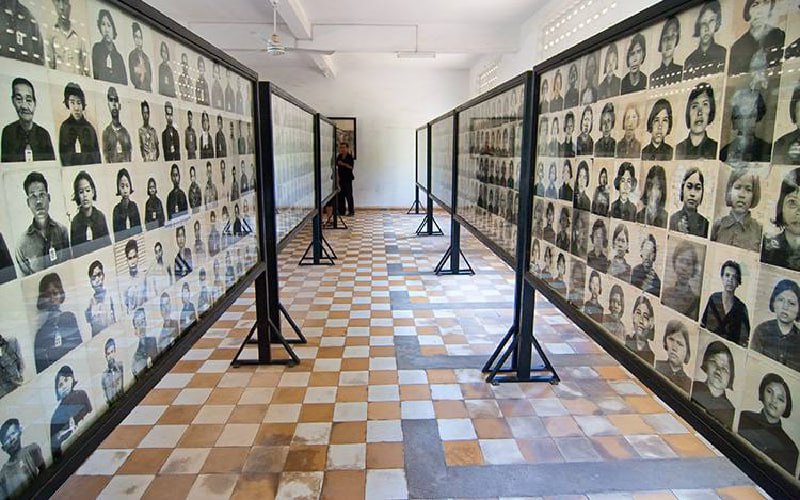
10. Choeung Ek Genocidal Center (Killing Fields):
Pay respects to the victims of the Khmer Rouge regime at this memorial site, which commemorates those who lost their lives during the genocide.
Choeung Ek, is a significant historical site commonly known as the Killing Fields. It was one of the many sites where the Khmer Rouge executed and buried victims during the brutal regime in the late 1970s. Visiting Choeung Ek provides a sobering and educational experience, allowing visitors to comprehend the tragic events that unfolded.


The site features a memorial stupa filled with human skulls, providing a powerful and emotional connection to Cambodia's past. Tourists visit Choeung Ek to pay their respects to the victims, gain insight into the country's history, and reflect on the resilience of the Cambodian people in the face of such atrocities. It serves as a poignant reminder of the importance of promoting peace, tolerance, and understanding.
